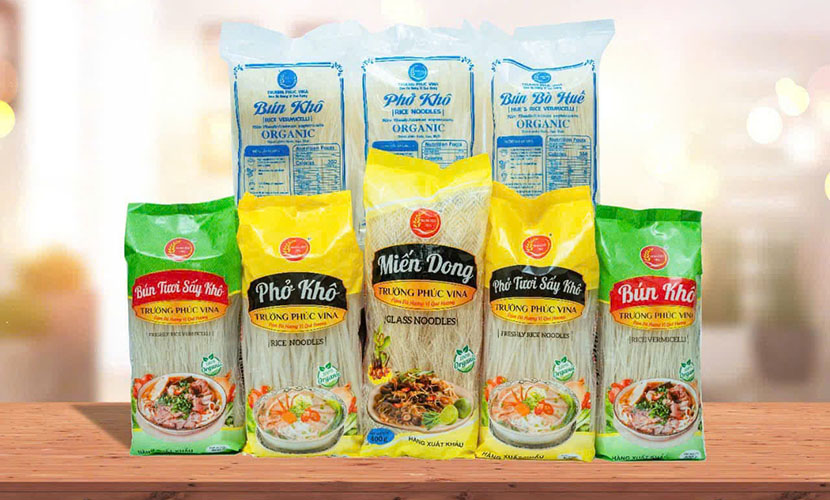
Overcoming fierce competition, Vietnamese export businesses have successfully introduced dried pho products to consumers in South Korea. A significant number of Koreans say they could eat Vietnam’s dried pho (phở khô) every day.
According to the Vietnam Trade Office in South Korea, Vietnamese food products currently account for about 2.5% of the total consumer demand in the Korean market.
Agrideco Vietnam Co., Ltd has specialized in dried products such as dried pho noodles, dried rice vermicelli, and rice paper. The comapny has made a strong impression in demanding markets such as Europe, Japan, and South Korea.

Vietnam’s dried pho (Phở khô Việt Nam)
The company shared that foreign partners have given positive feedback on the taste and aesthetic appeal of their products, particularly the dried pho noodles in the Korean market.
“Although Europe remains our main market, South Korea and Japan have recently experienced stronger growth, surpassing other regions. At times, we could not produce enough to meet the demand. In other words, there was a shortage of dried pho and vermicelli for export,” the company representative said.
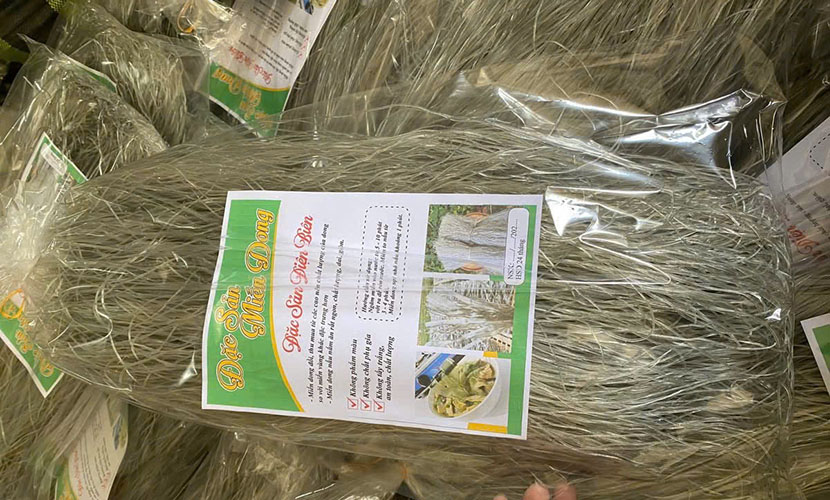
Dien Bien glass noodles (Miến dong Điện Biên)
To export to these two markets, the company uses industrial drying methods without additives or chemicals. “The demand is huge, as the Vietnam’s dried pho brand is now well-known in Korea,” he added.
He also shared that his company currently exports about 6 to 8 containers of rice noodles and rice paper to South Korea each month.
As for the key to success, he noted: “Compared to Thailand and China, Vietnamese dried noodles and pho have better prices. Instead of exporting raw materials at low prices, we can create more value and elevate Vietnamese agricultural products by adding smart processing and packaging.”
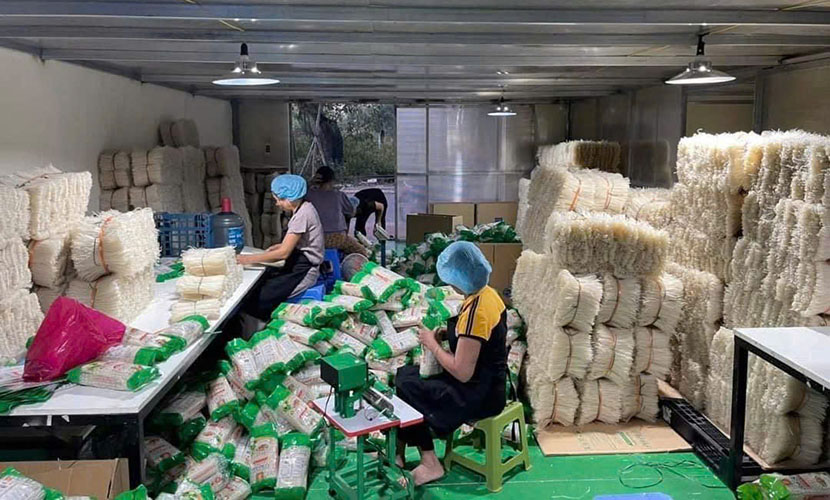
A factory of Vietnam’s dried pho
Meanwhile, another business from Binh Dinh Province that exports dried pho to South Korea reported that they are now shipping around three containers of dried pho per month, which is an increase from previous volumes.
According to Mr. Nguyen, who is working at the company’s sales department, attributed this growth to their use of high-quality brown rice, which has helped their pho stand out.
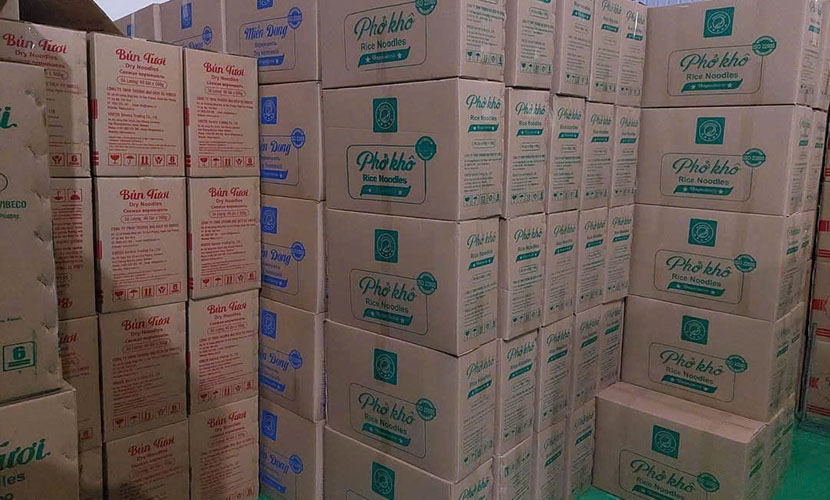
Vietnam’s dried pho for export
“Korean consumers are shifting from Chinese-made dried pho to Vietnamese products because ours taste better. Vietnamese brown rice dried pho has a chewy texture and a fragrant aroma,” said Mr. Nguyen.
Many export businesses have even drawn comparisons, saying that if Japan has ramen and Korea has udon, then Vietnam has pho. Since 2024, more and more Vietnamese companies, who have been producing rice noodles and pho on a large scale for export purposes.
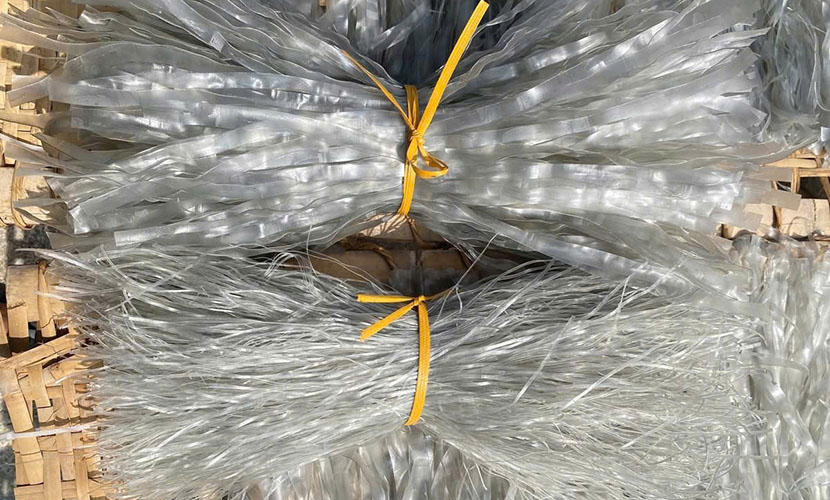
Binh Lieu canna noodles (Miến dong Bình Liêu)
To make Vietnam’s dried pho the top choice in export markets, businesses must invest in branding and promoting the image of rice-based products, especially pho.
“My daughter is studying in South Korea. On each morning, the students often cook pho to eat quickly before heading to school. Most of them choose Vietnamese dried pho because its flavor aligns with Korean and Japanese cuisine,” Mr. Nguyen said.
“My daughter’s friends even say they could eat Vietnamese dried pho every day without getting tired of it. This is a positive sign from consumers. Export businesses should increase production and diversify their offerings. Then, when Koreans think of cooking pho, their only choice is Vietnam’s dried pho.”
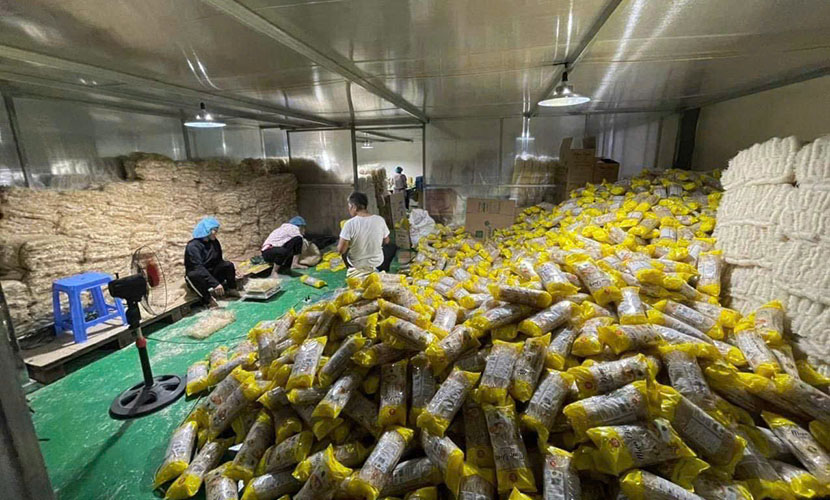
A packing house of Vietnamese noodles
To stay competitive, Vietnamese pho products must meet food safety and packaging standards required by foreign markets.
“However, packaging design also needs improvement. Compared to Thai dried pho, their packaging is very eye-catching. Vietnamese dried pho is on the shelves of major supermarkets, but the packaging still looks too simple,” Mr. Nguyen added.
Vietnamese source: https://tuoitre.vn/pho-kho-viet-chiem-cam-tinh-o-xu-so-kim-chi-20241004074442084.htm
